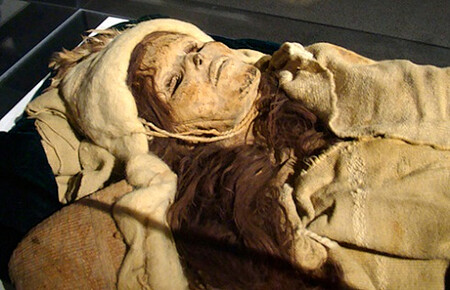The choice of what we eat has risen many levels among human priorities. And not without reason. Science has helped us understand how important it is to keep the body healthy, although as with almost everything, there are diets and diets. While many are supported by studies and research, others are more a matter of faith. Everything from rhino horns to dogs is on the menu. Well, none of this is close to what happened in the past.
A disgusting dish. Mumiathe product created from mummified bodies was a medicinal substance consumed for centuries by rich and poor, available in pharmacies and created from the remains of mummies brought from Egyptian tombs to Europe. The curious thing about this extravagant story that began in Europe in the 11th century is that it all started with a mistake or, to be more exact and as the historian Karl Dannenfelt explainedfrom a series of translation errors.
Mumia before Mumia. The word had a different meaning at first. Prized for its healing qualities, mumia was a substance found on a single Persian mountainside where it leached from the black rock asphalt. The substance, named after the local word for wax, “mama” (mum), was used for various medical purposes and gained a reputation in the Arab world for being expensive, precious and effective.

A misunderstanding. However, Western Europeans began to encounter the Islamic world and translate its texts, and a translation error led to widespread confusion about the meaning of mumia. According to Dannenfelt, several translators in the 11th and 12th centuries They incorrectly identified the mummy as a substance exuded from bodies preserved in Egyptian tombs.
The confusion came from the similarity of the word with another: mummy. Additionally, some ancient Egyptian mummies were embalmed with asphalt (science now knows that just some mummies were made by this process), but Western Europeans, fascinated by ancient finds in Egypt, accepted the concept and the mummy became associated with embalmed bodies rather than the precious Persian asphalt. What happened next you can imagine.


We accept the body as a healing property. And to the whole equation we must add the beginning of what was called “medical cannibalism”. By then, the consumption of human remains fitted in with the main medical theories of the time, and so the first homeopathic ideas arose, and the idea that “like” cured “like”. So, for example, crushed skull was eaten for headaches. Or blood was drunk for blood diseases.
Another reason human remains were considered potent was because they were thought to contain the spirit of the body from which they were taken. The “spirit” was considered a very real part of physiology, one that linked body and soul. In this context, blood was especially powerful.


A jar used to store mummies
Mummy recipe. Under this scenario, the arrival of mummies in the diet was not so far-fetched, and that translation error would bring the mummies themselves into consumption. With the arrival of the Mumia, then also called the mummy, doctors believed they had found a new source of healing products made from the human body. His properties”? For almost everything, from headaches to heart attacks.
Suddenly, people were raiding Egyptian tombs not just for jewelry or pottery, but also for the bodies inside. Demand quickly outstripped supply, giving rise to a trade in fake mummies. Body snatchers and merchants began turning fresh corpses and the bodies of executed criminals and enslaved people into “mummies,” all in an attempt to cash in on the fad.
These bodies were then embalmed with salt and drugs, dried in an oven, and ground into a powder that apothecaries added to their home remedies.


Egyptian mummy seller (1875)
Mummies in the apothecary. By the 12th century, apothecaries They used crushed mummies for their supernatural medicinal properties. To give you an idea, mummies were a prescription medicine for the next 500 years. In a world without antibiotics, doctors prescribed ground-up skulls, bones and flesh to treat ailments ranging from headaches to reducing swelling to curing the plague.
Fresh meat. Years passed, and with them beliefs. Some doctors thought that fresh flesh and blood had an extra vitality that the long-dead (mummies) lacked. In fact, elites such as King Charles II of England took medicines made from human skulls after suffering seizures, and until 1909, doctors often used human skulls to treat neurological conditions.


I don’t know if curious is the right word, but back then, eating mummies and fresh meat was the order of the day, and it was not unusual for royalty to eat… royalty.
Parties with mummies. They occurred in the 19th century. Then the “fashion” of consuming embalmed bodies for their properties had almost passed, and we went from performing autopsies on mummies for science to organizing feasts and “development parties” among the Victorians where Egyptian corpses were carried away simply for the sake of entertainment at private parties.
In fact, the excitement of seeing dry flesh and bones appear when the bandages were removed caused people to flock to these performances, whether in a private home or in the theater of a scientific society.
By the end of the 19th century the use of the mummy finally disappeared, or almost.

End of a “different” medicine. As science advanced, cannibalistic remedies disappeared, although late examples of corpse medicine can always be found. The mummy was sold as a medicine in a German medical catalogue in the early 20th century, and the last known attempt to swallow blood on the scaffold was made in Germany in 1908.
The truth is that it was not so long ago, and almost always with the same mantra in the background: once a body is dead, we can do whatever we want with it.
Image | Paul Dominique Philippoteaux, Slices of Light, Martonkurucz, Brian Jeffery Beggerly, Felix Bonfils
At Xataka | Digitally unwrapping a mummy: this is the technology that has allowed us to study the body of a pharaoh without removing the bandages
In Xataka | Three children were sacrificed at 6,000 meters above sea level. 500 years later, we find them the same as they had been left














![[Img #74683]](https://thelatestnews.world/wp-content/uploads/2024/12/The-main-mistakes-to-avoid-when-betting-on-electronic-sports-300x200.jpg)

Add Comment